24 Modern Garden Edging Ideas for a Perfectly-Polished Border in Your Yard
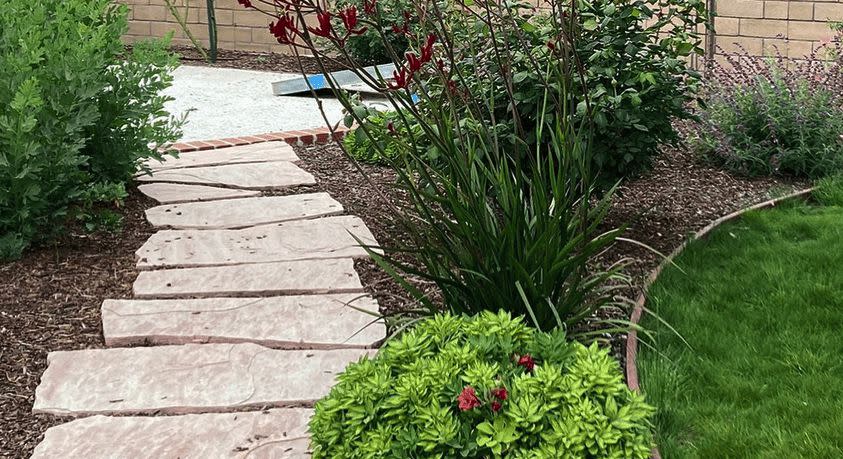
@tilly_design / Instagram
Whether you’re shaping up your front flower beds or laying out a sprawling backyard garden, one thing can make or break your aesthetic: your edging.
While it might seem like one small element to consider, garden edging sets the tone for the rest of the space. Stark and sleek signals a modern outdoor area with clean lines, while using organic materials like river rocks or timber might imply a more rustic home.
To look at some of the best ways to finish off our gardens and flower beds, we’ve rounded up a mix of insights and inspo from a few of our favorite gardening sources.
Why is Garden Edging Necessary?
As Summer Thompson of Love, Plants explains, garden edging is key for creating a defined barrier between your lawn or pathway and your flower beds.
“It serves practical purposes like soil retention and defining pathways, but it is also an aesthetic choice in how you want your garden to look,” Thompson says.
Consistency Is Key
The idea of what looks best is, of course, subjective, but as Thompson notes, the true key to creating a sleek and polished look is consistency in your materials.
“For best results only use one kind of edging across your entire space to make it feel consistent and uniform,” she says.
Materials to Use for a Modern Garden Bed
Once you’ve sorted out where you’ll need your edging, it’s time to sort out what, exactly, you’d like to use. Here are some of the best suggestions we’ve learned from our experts.
Edge Restraints
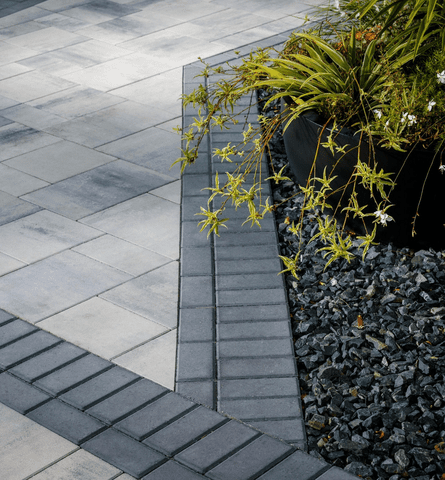
@belgardoutdoorliving / Instagram
If you’re working with an angular or curved space, Joe Raboine, Vice President of Design at Belgard, suggests edge restraints. These create defined borders that can be covered with mulch or sod.
“Everything blends seamlessly to create a nice, clean look,” Raboine says. “Galvanized spikes hold the restraints in place to prevent future movement.”
Edging Stones
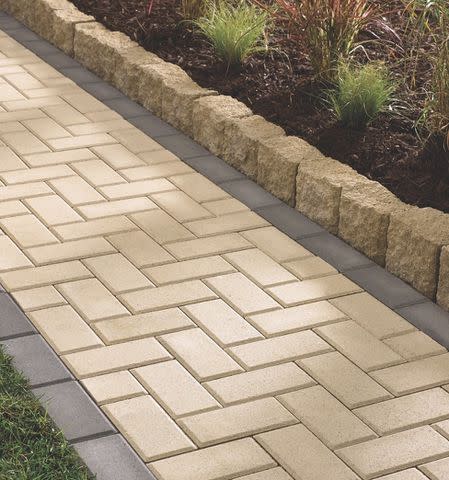
@belgardoutdoorliving / Instagram
For a defined and clean look, Raboine strongly suggests edging stones.
“They add an extra element of sophistication to gardens,” Raboine says. “They not only add appeal, but they also help to keep soil, mulch, rocks, and the lawn within boundaries.”
As another perk, edging stones can be coordinated with your existing materials to create a truly streamlined design.
Cut Soil Edging
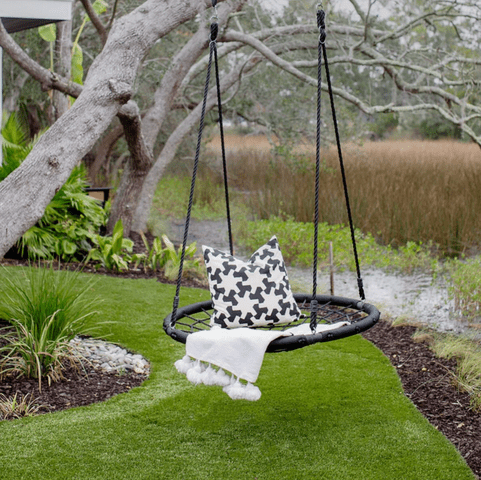
@tilly_design / Instagram
If you’re looking for a simple, elegant approach, Mary Jane Duford of Home for the Harvest strongly suggests cut soil edging—a shallow, V-shaped ditch.
“This creates a sharp, clean line that beautifully separates the lawn from the mulched garden bed,” Duford says.
While it can be done manually or with a gas-powered edger, Duford also notes it requires precise installation and regular upkeep. On the other hand, cut soil edges are a cost-effective solution.
“If you take pride in a meticulously maintained edge or simply are tired of cheap plastic bending and buckling, a cut soil edge is worth considering,” Duford says.
Chopped Stone Edge
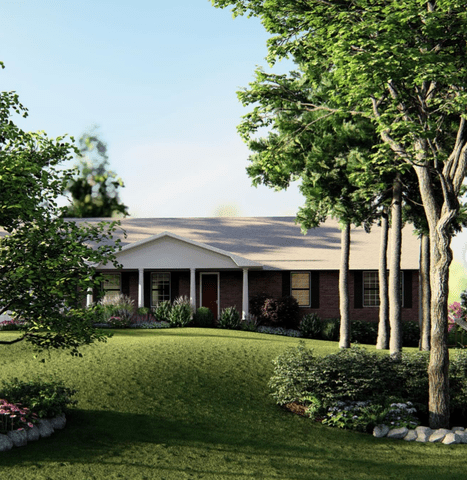
@tilly_design / Instagram
For a polished visual separation between your flower beds and pathways or lawn, Cate Singleton, Tilly’s Director of Design says she prefers a chopped stone edge.
“This is also a great option for properties that have a slight slope,” Singleton says. “The option for multiple courses of chopped stone can ensure that the landscape beds remain at a constant level.”
Raw Corten Steel Edging
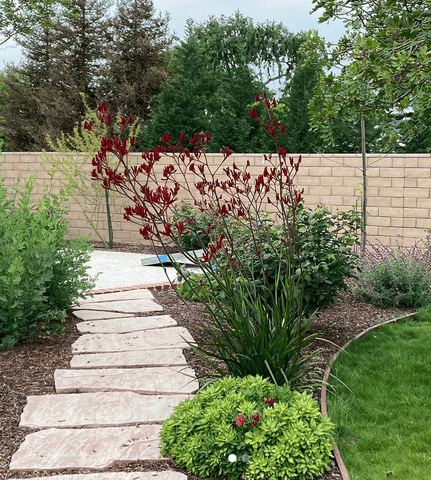
@tilly_design / Instagram
If you’re looking for something that will age beautifully, Singleton suggests raw corten steel.
"I love the look of a raw corten steel edging that patinas over time,” she says. “It can be utilized for both a modern and naturalistic style garden.”
Brick Walls
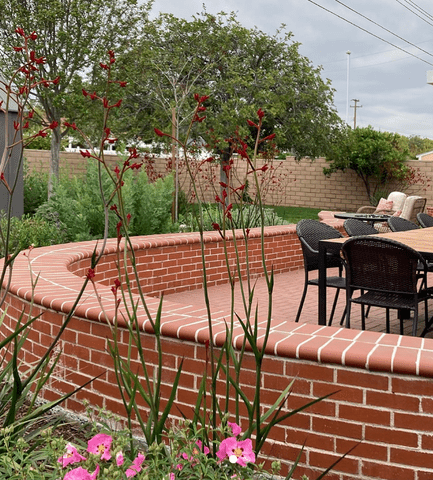
@tilly_design / Instagram
If you're looking for true separation in your backyard, say between the garden and your dining area, an edging with some height might be required. Red brick is a classic way to add height, separation, and make your outdoor dining area feel like an extension of your home.
Gravel

@luckyplot13 / Instagram
According to Autumn Hilliard-Knapp, Horticulturist at Perfect Plants Nursery, gravel is a great option if you’re looking for something affordable and easy.
“[This] can be easily installed to define the garden edges while also providing practical benefits such as moisture retention and weed prevention,” she says.
Natural Stone
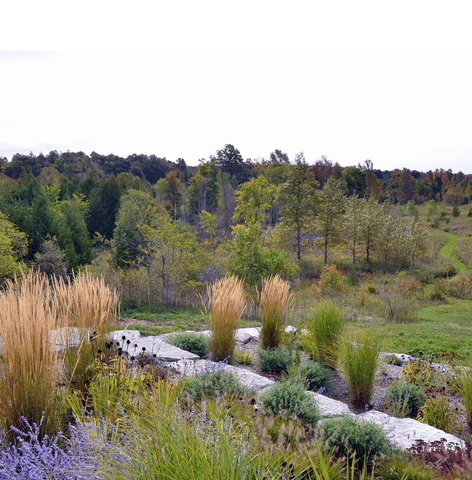
@ladylandscape / Instagram
Thompson also assures us you don’t have to spend a ton to still get a sleek and complete look. In fact, you might already have materials on hand that will do the trick.
“Natural stone is a great option if you have access to it or can source some locally,” Thompson says. “It also requires little to no maintenance and will feel organic in your garden.”
Cedar Timber Edging
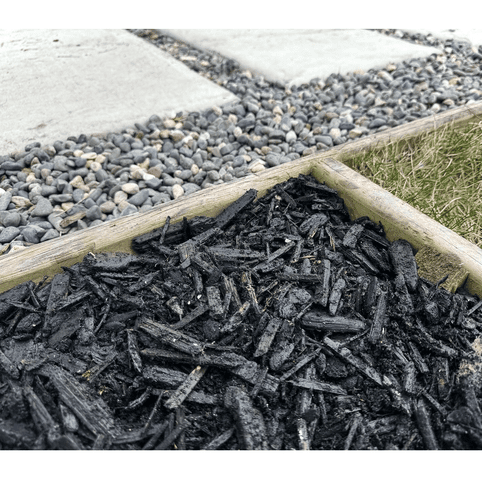
@homefortheharvest / Instagram
According to Duford, cedar timber is the perfect solution if you want an understated but elegant look that blends seamlessly while also providing a clear separation.
“This type of edging uses the natural beauty and durability of cedar wood to create defined borders for garden beds and pathways,” Duford says.
It should also be noted that, due to the nature of cedar lumber, this is a great option for any straight runs of edging.
“Cedar is a popular choice due to its resistance to decay and insects, ensuring a long-lasting and low-maintenance garden solution,” Duford says.
Tall or Long Grasses
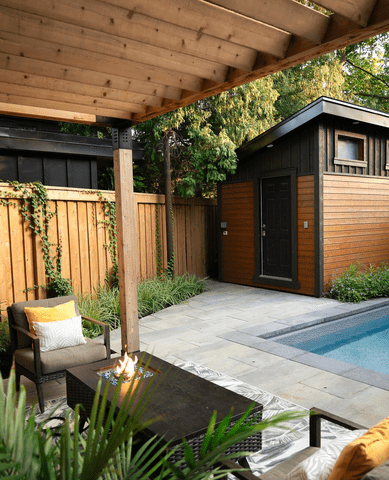
@ladylandscape / Instagram
If you’re looking to fill the space between a pathway and the edge of your property, consider long or tall grasses. These can edge your beds in a way that will discourage people from stepping into the area and can create a uniformed and low-maintenance look.
Custom Concrete Edging
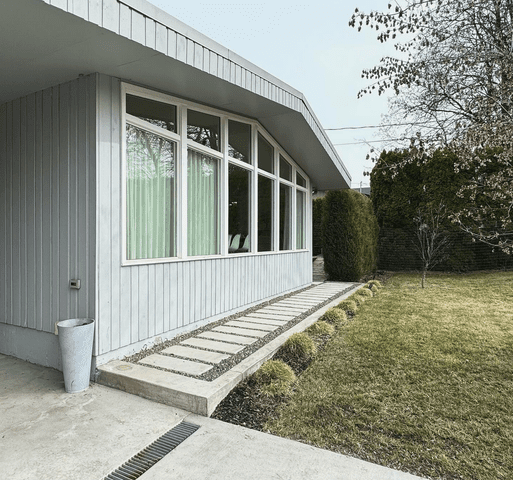
@homefortheharvest / Instagram
If you’re looking for a more durable edging solution, Duford suggests custom concrete edging, which creates a permanent border tailored to your home’s design.
“This method provides a crisp, clean boundary, and also serves a practical purpose by creating a wide barrier to prevent grass from encroaching into garden areas,” she says.
Duford also notes this option is useful if a small change of grade is required because the concrete can be poured to function as a mini retaining wall. On the other hand, it can be costly as you will likely need a professional—both to pour the concrete and to confirm this option is a good fit for your space.
Recycled or Reclaimed Bricks
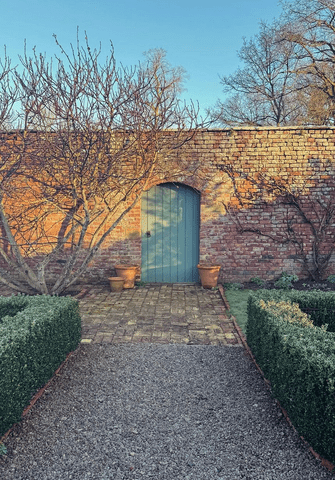
@thelaundrygarden / Instagram
If you’re a DIYer or have recently completed a renovation project, Thompson notes this could be the perfect time to recycle your materials and create a beautiful garden edging, and Jenny Williams of The Laundry Garden agrees. In her case, she uses brick or slate, as it’s what’s featured elsewhere on her property.
“I like to use brick or slate for edging,” Williams says. “This is because they feature everywhere in the surrounding buildings and walls. It just looks right, and we know that slate was used for edging here in the past so it is historically accurate.”
Mulch
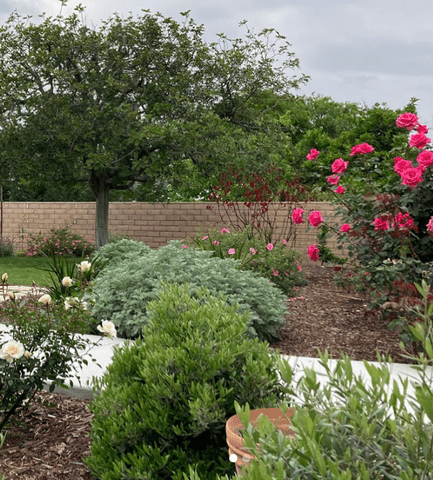
@tilly_design / Instagram
If you want to go truly organic, Thompson suggests mulch as the most cost-effective and environmentally friendly pick.
“Mulch will improve your soil as it breaks down and can be sourced locally and inexpensively,” she says.
Vertical Stone "Fencing"
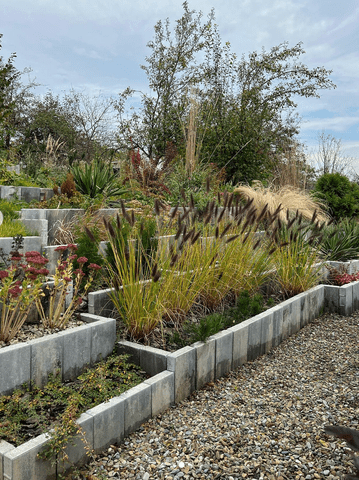
@ann.living / Instagram
If you’re facing a steep incline, edging is likely necessary. But, you can also make the incline work to your advantage. We love these tiered flower beds lined with tall stones set to form a sort of fence around each border.
Patio Stones

@ladylandscape / Instagram
While edging is key when considering your flower beds and pathways, it’s also something to think about when designing your front lawn. Extending your front steps and patio to reflect the design of your house is a sleek and modern way to edge your front lawn.
Wildflowers

@tilly_design / Instagram
If you want a pollinator-friendly option that’s perfect for a cottagecore-inspired home, Thompson says she prefers to sprinkle developed seeds of her favorite annuals around her edges.
This includes everything from clover to marigolds to herbs and more.
“I love to embrace a bit of chaos gardening,” says Thompson.
Mixed Materials
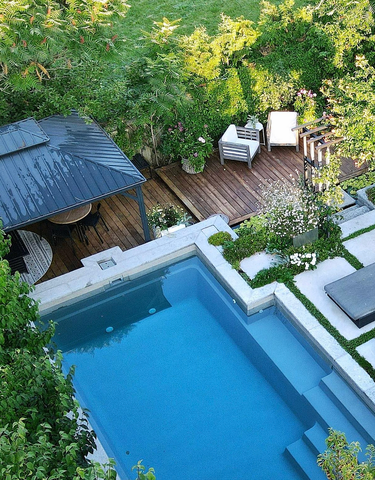
@ladylandscape / Instagram
While using all the same edging can create a sleek and streamlined look, you can still switch things up between zones. A mix of concrete, wood, and stone to delineate different areas of your backyard can make it feel like an intentional space designed for enjoyment.
Recessed Lighting
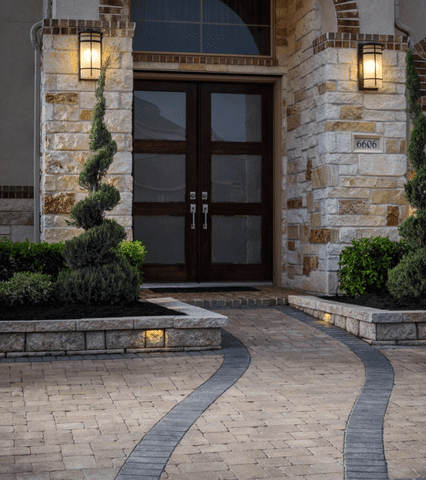
@belgardoutdoorliving / Instagram
If you want to make your edging both beautiful and functional, Raboine says recessed lights can help.
“Add a colored glow by installing LEDs as part of a contemporary lawn edging idea that will create a stylish effect,” he says.
Shaped Paving Stones

@ladylandscape / Instagram
Paving stones don’t have to be concrete slabs plopped down along your garden. As shown here, they can be cut into unique shapes, adding as much style as they do function.
Water Features
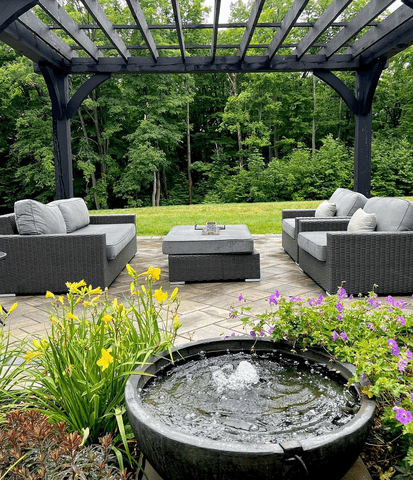
@ladylandscape / Instagram
If you find yourself with an edging design you don’t love or a large, empty space you’d love to fill inside your bed, consider a water feature atop your paving stones to add height, depth, and visual interest.
Gabion
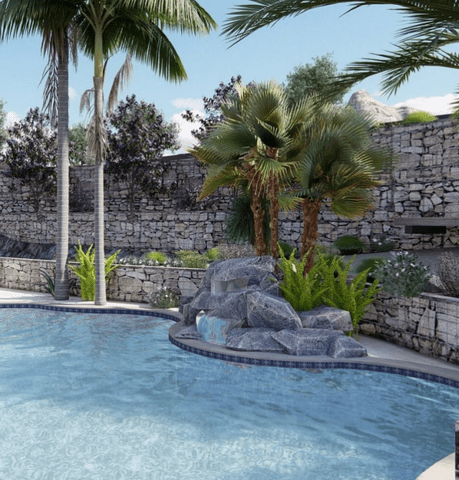
@tilly_design / Instagram
If your edging is meant to double as a retaining wall, then gabion is a great way to maintain the shape and boundary while also creating a more designed aesthetic. Fill with large, salvaged rocks for a design scheme that's reflective of both your home and your local environment.
Fire Features
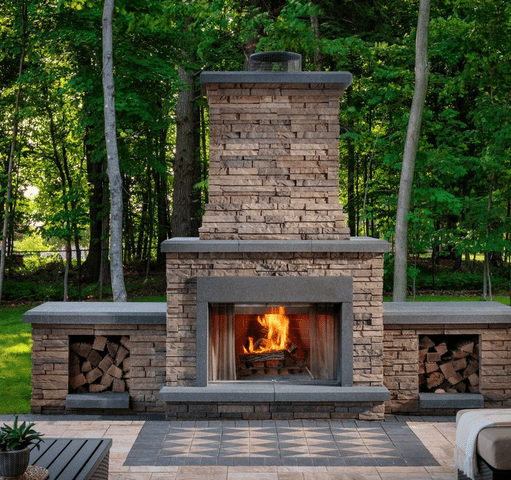
@belgardoutdoorliving / Instagram
Similar to water features, a fire feature or stunning outdoor fireplace is another way to elevate your garden edging into something that's both beautiful and functional.
Custom Decking
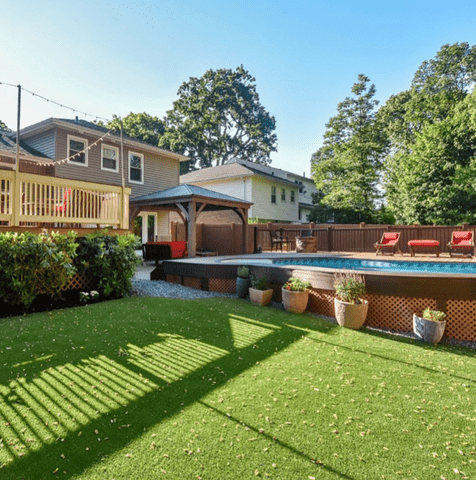
@tilly_design / Instagram
Whether you have a raised patio or an above ground pool, custom decking is another great way to edge your lawn or garden.
Elevated Flower Beds
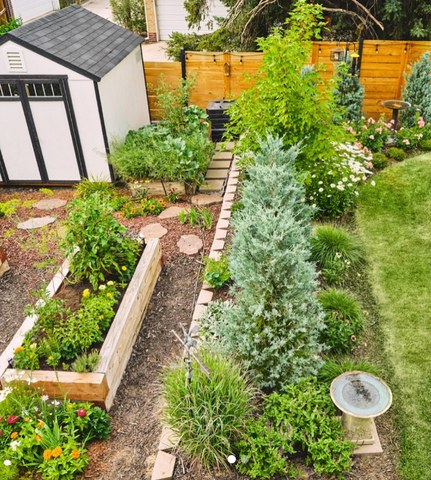
@tilly_design / Instagram
Elevated garden beds are another fabulous way to create a garden edge, whether you're using these areas for vegetables or flowers. They can be used to fill a small space, or line a pathway.
Frequently Asked Questions
What is the cheapest way to do edging?
Recycled and organic materials found in your own backyard will always be the cheapest way to edge your garden.
What is the best way to edge a garden?
What’s best is subjective and mostly depends on your needs and tastes, but the best edging options will be the ones that most reflect your aesthetic while also effectively defining your beds and aiding in soil retention.
What can I use instead of edging?
If you’re not interested in a structured edge, an eclectic array of wildflowers is an excellent way to define your path or garden edge without adding additional materials to your beds.
Read the original article on The Spruce.

